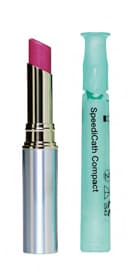 For most wheelers, catheterizing comes with a disability of MS, SCI, polio, spina bifida or other condition that can cause your brain and bladder to stop talking to one another. Cathing helps relieve the bladder, but for women who cath, a shorter urethra causes a higher risk than men of contracting urinary tract infections. With proper hygiene and catheter usage, the number of UTIs you acquire can be reduced. Here are tips and scenarios that may help you change your practice or find a more suitable catheter for your comfort and health.
For most wheelers, catheterizing comes with a disability of MS, SCI, polio, spina bifida or other condition that can cause your brain and bladder to stop talking to one another. Cathing helps relieve the bladder, but for women who cath, a shorter urethra causes a higher risk than men of contracting urinary tract infections. With proper hygiene and catheter usage, the number of UTIs you acquire can be reduced. Here are tips and scenarios that may help you change your practice or find a more suitable catheter for your comfort and health.
How Your Bladder Works
Your bladder is a muscle that constricts to hold urine until your brain sends a signal to relax the urethra sphincter muscle for urine release. When that message isn’t received, placing a catheter between the sphincter muscle — either intermittently or indwelling — works with gravity to siphon urine through tiny eyelets at the catheter tip.
Intermittent cathing should be done four to six times per day or when the bladder has 400 ml of urine. Holding more urine can distend the bladder, which can lead to infection. Emptying your bladder improves blood circulation, making mucous membranes more resistant to infectious bacteria.
Indwelling catheters, which are held in place by one or two small balloons that are inflated once inside, remain in your bladder for two to four weeks and drain into a bag outside your body. Some people find indwelling works best for them if they are unable to use a toilet or cannot self-cath.
An indwelling suprapubic uses a catheter that inserts via an opening through the abdomen and is used when urethral catheterization is not feasible.
External pouches are used for those who are not able to cath themselves but do not need a suprapubic or indwelling catheter. A pouch is placed over the labia, applied by a caregiver, and hair must be trimmed.
Complications and Infections
It is believed that most UTIs occur due to improper hygiene while cathing. Other reasons include strictures in the urethra caused by catheters, or biofilms in catheters. Biofilms, which are microorganisms that colonize the internal surface of catheters, thicken and multiply. Infections from biofilms can be caused by not catheterizing frequently enough or reusing unclean catheters. Most UTIs are preventable if you follow these guidelines:
• Thoroughly wash hands before and after handling the catheter as well as before and after handling drainage bag.
• Do not re-use single-use catheters.
• Maintain proper insertion technique. (Company websites or your doctor will provide information.)
• Use appropriate catheter type, size and tip. Experts suggest starting with a circumference of 14 French.
• If cathing intermittently, empty bladder frequently, based on fluid intake and bladder volume of less than 400 ml.
• Keep hydrated and maintain proper fluid intake levels throughout the day.
• Completely empty bladder during catheterization. Improper size or tip could cause your bladder to not empty fully.
A dosage of cranberry can prevent bacteria from adhering to the bladder wall. Suggested daily dosage is one 300-400mg tablet or 8 ounces of unsweetened juice. However, there is no evidence to indicate that cranberry can eliminate an infection once it begins.
A prescription is needed to purchase catheters. You can pay cash and get them from your pharmacy, go through private insurance or, if you have two documented UTIs per year, have them paid for by Medicare.
Most of the company websites we’ve listed at the end of this article offer information and videos you can view to learn best practices and techniques. Following are useful tips from women who have years of experience cathing.

Sarah True Mulligan — Prescott, Ariz.
Age: 36
Disability: SCI T1 and T9
Catheter: Wellspect Lo-Fric intermittent; indwelling
Using for: 20 years
Indwelling problems: “While pregnant, they expected to do a C-section so they gave me an indwelling catheter. During labor I pushed out the indwelling catheter while pushing out my baby. It damaged my urethra and I still have to wear an 18 French now. I hope to go back to using intermittent catheters.”
Chinese medicine: “I acquired Methicillin-resistant Staphylococcus aureus while in the hospital a few years ago and went into kidney failure. I found a Chinese doctor and responded better to his medicine than Western pharmaceuticals and was able to go off all meds. For UTIs I use D-Mannose, which has a similar effect as cranberry. It’s a simple sugar found in fruit that does not affect your sugar levels.”
Carolyn Bostic — Springfield, Mo.
Age: 46
Disability: spina bifida
Catheter: Coloplast coude
Using for: 10 years
Tips: “Whenever I am hospitalized or on bed rest, I use an indwelling to make it easier on me and my caregiver. When I clean my catheters I do not use anti-bacterial soap. I feel this is safer so it does not affect the antibiotics I take.”
Brenda McMurtrey — Idaho Falls, Idaho
Age: 43
Disability: SCI T9 complete
Catheter: Coloplast
Using since: 1983
Tip: “My only complaint is the cost — why sell them individually? I mean for us gimps it’s not like after 10, 20, or even 50 we are done. This expense is necessary and not a choice. I’ve been lucky having private insurance so I have almost always had an ample supply, but have had to wait for the UPS man to bring me sterile caths.”
Terrie Lincoln — Marietta, Ohio
Age: 35
Disability: SCI C5-6
Catheter: Medline indwelling
Using since: 1998
Tip: “I wish they were clear so I could see when the cath has sediment or other junk inside. Vinegar is good for cleaning my cath and drainage bags. I fill the bags one fourth full of hot water, add about 10cc of vinegar, shake it around, let it sit for 10 minutes, then drain and re-rinse with hot water. I used to get UTIs about once a month. Now with proper cleaning and cranberry pills I don’t usually get them unless I’m constipated.”
A.F. — Pacific Grove, Calif.
Age: 25
Disability: spina bifida
Catheter: Coloplast
Using since: 1991
Tip: “I have tried the shorter catheters that you can put in your pocket that have antiseptic right on them and have not liked them. Maybe it was the shock of my body going through a change, but I almost immediately got a UTI from using them. Instead, I wash my hands to ensure that I’m using them as hygienically as possible and occasionally take a cranberry pill and have not been getting any UTIs.”
Cathy Krings — Albion, Neb.
Age: 58
Disability: Devic’s syndrome
Catheter: Suprapubic
Using since: 2004
Tip: “I used an intermittent for a while but my Devic’s, which has similar symptoms as MS, prevents me from transferring to a toilet and I have no bladder control. I didn’t like the indwelling catheter because it made me sore and I always had an infection. After I had surgery for a suprapubic, I got back so much independence. I don’t have to worry about getting to a toilet, wearing diapers. I can travel and I don’t have as many bladder infections.”
Kylie Taillon — Ontario, Canada
Age: 22
Disability: spina bifida
Catheter: Coloplast hydrophilic
Using since: birth
Tip: “It is really difficult to put a syringe on the end of the catheter to put medication directly into my bladder. Plus, I wish catheters didn’t have any hydrophilic solution on them: once they get exposed to air, they get really sticky and tricky to use with gloves.”
Carrie Carlson — Daggett, Mich.
Age: 35
Disability: spina bifida
Catheter: Cure
Using since: 1982
Tip: “I’ve had to adapt when I lived in Taiwan, England, and rural areas, by always carrying a spare change of underwear, extra catheters, clothing, and an empty plastic bottle in case the toilet was not easily manageable. I’d like to see companies use playful colors for their caths, especially for children. Color has been proven to help mental health, empower and improve self-esteem.”
Lynn Williams — Hanover Township, Pa.
Age: 59
Disability: SCI C7
Catheter: Suprapubic
Tips: “I had an indwelling catheter that pulled out a lot and was close to getting fecal matter. The suprapubic is cleaner and less of a problem during sex.”

Marrin Holliday — Petoskey, Mich.
Age: 14
Disability: spina bifida
Catheter: Coloplast
Using for: 11 years
Tip: [from Marrin’s mother] “At 12, Marrin had severe pain in her side. We took her to the ER four times — she was balled up in pain, crying. Each time the doctors sent her home with antibiotics for a UTI. The last doctor said her blood pressure was high. It turned out she was in stage 3 kidney failure. I’m sure they thought she’s a child complaining, she has a history of doing this, or I’m a panicking mom. Her primary now takes us very seriously. I wish there was a catheter that had a valve that you could open or close to empty the urine instead of having to insert a catheter all the time.”
Urological Companies
Adapta Medical, www.adaptamedical.com; 855/329-8355
PerfIC Cath unisex catheter is the only closed system on the market that places the catheter inside a sheath outside of the collection bag. This allows you to hold onto the sheath while cathing. The
collection bag hook and finger loops provides hands-free cathing.
BioRelief, www.biorelief.com; 954/861-6359
BioRelief carries Stadium Gal, SheWee, Whiz Freedom, GoGirl urinary funnels and external pouches for wheelers who can stand but are unable to transfer from a toilet.
Coloplast, www.coloplast.com; 612/337-7800
SpeediCath hydrophilic catheters are pre-hydrated and packed in sterile saline. Features a unique lubricant gel, bonded to the plastic of the catheter and is instantly ready to use. Other hydro caths have water packets or need added water.
Coloplast is introducing soon the SpeediCath Compact. The size of a small reading glass case, it fits discreetly inside your purse, backpack or pocket. The new system features an attached urine disposal bag so you can cath from your wheelchair without transferring to a toilet.
Cure Medical, www.curemedical.com; 800/570-1778
Cure Catheter, Cure Twist and Cure Closed System are pre-lubricated and manufactured without DEHP, a known carcinogen, latex or BPA. The compact Cure Twist is the size of a large mascara tube.
Hollister, www.Hollister.com; 888/740-8999
Apogee, Advance Plus. Apogee catheters feature ultra smooth eyelets to help reduce urethral strictures. The Advance Plus closed-system intermittents come packaged inside a dry, sterile collection bag that features a reservoir of gel that lubricates the catheter as you insert. This process eliminates difficult maneuvering of a slippery catheter while still in the collection bag and offers hands-off cathing to reduce risk of contamination. Due out this month, the Advance Plus Pocket is the size of a sunglass case.
Medical Technologies of Georgia, www.medtechga.com; 888/511-4239
MTG Cath-Lean for women, EZ-Advancer, EZ-Gripper. A patented MTG EZ-Advancer valve ensures that catheter doesn’t retract into bag during insertion; use of fine motor skills not required. Outer package is one-third the size of standard closed systems and fits in a purse or pocket. Includes a refuse bag for discreet disposal. American made.
Poiesis Medical, www.poiesismedical.com; 877/487-5740
Duette indwelling; catheterizes through the urethra. The unique dual-balloon unit features a bladder protection that eliminates damage of the mucosal lining and bladder wall, often caused by traditional indwelling catheter tips. This trauma can lead to problems such as blood in the urine, bladder spasms and UTIs.
Rochester Medical, www.rocm.com; 800/243-3315
Magic-3 intermittent, Grip-Lok Foley and Fem-Soft. Fem-Soft urethral insert helps prevent unintentional urine leakage between cathing, to eliminate wetness and odor without surgery; latex-free, PVC-free and DEHP-free, American made.
Teleflex Medical, www.Teleflex.com; 800/334-4475
FloCath Compact, Touchless FloCath, FloCath Quick and EasyCath. Each brand includes a complete line of individually packaged female catheters 7.75 inches from funnel end to tip. The touchless FloCath Quick catheters are packaged with an integrated sachet of .09 percent sterile saline and handling sheath. The sterile saline ensures proper hydration of the coated catheter and the saline is closer than water to the body’s natural chemistry.
Wellspect Healthcare, www.lofric.us; 424/241-1458
LoFric hydrophilic intermittent. Features Urotonic surface technology, which provides the tube’s surface layer the same salt content as in the urethral environment to ensure extremely low friction between the catheter and urethra. Lo-Fric uses water to lubricate the catheter, no gels or solutions.
Support New MobilityWait! Before you wander off to other parts of the internet, please consider supporting New Mobility. For more than three decades, New Mobility has published groundbreaking content for active wheelchair users. We share practical advice from wheelchair users across the country, review life-changing technology and demand equity in healthcare, travel and all facets of life. But none of this is cheap, easy or profitable. Your support helps us give wheelchair users the resources to build a fulfilling life. |


Recent Comments
Bill on LapStacker Relaunches Wheelchair Carrying System
Phillip Gossett on Functional Fitness: How To Make Your Transfers Easier
Kevin Hoy on TiLite Releases Its First Carbon Fiber Wheelchair